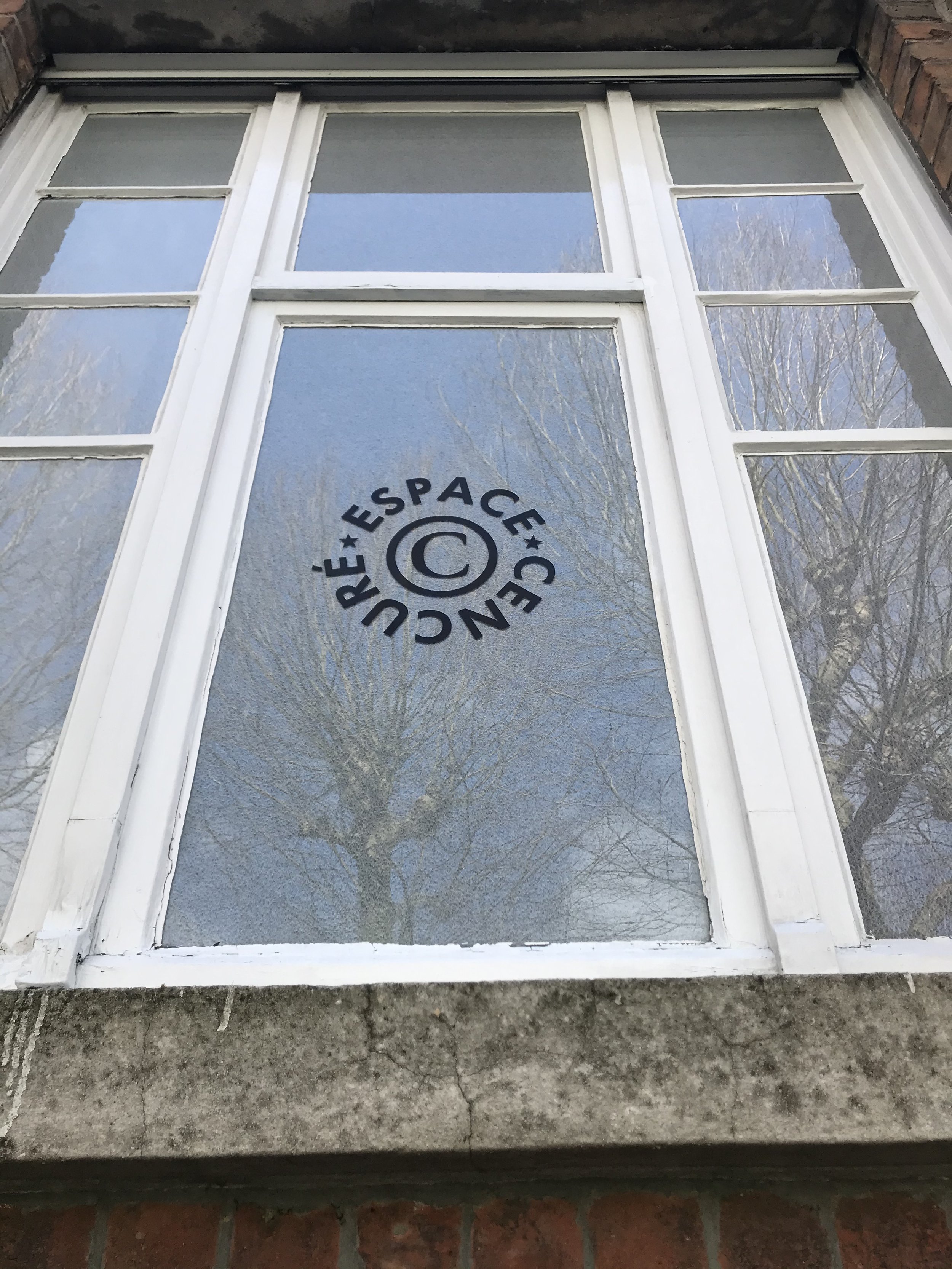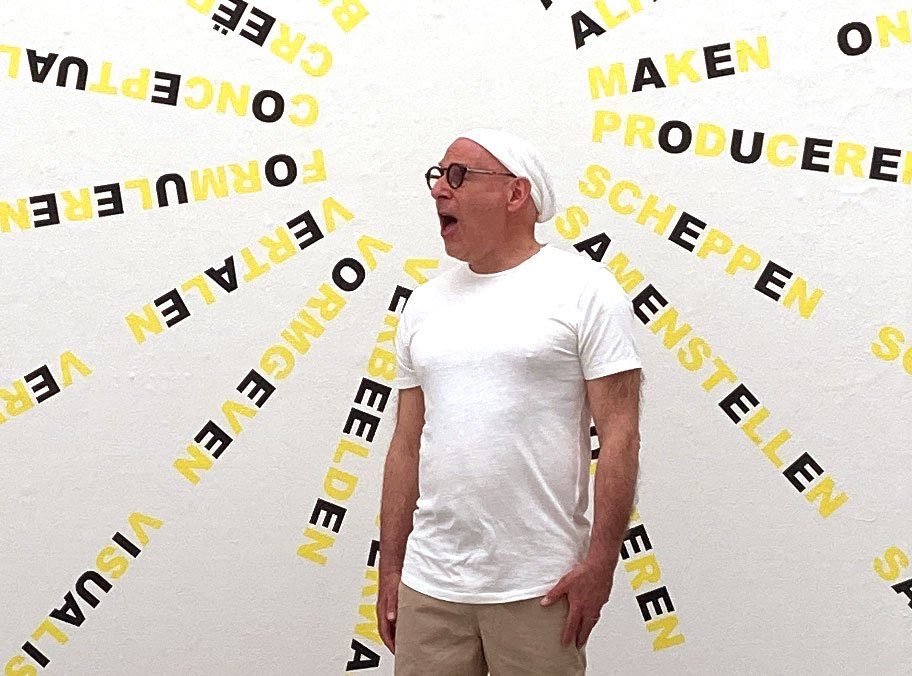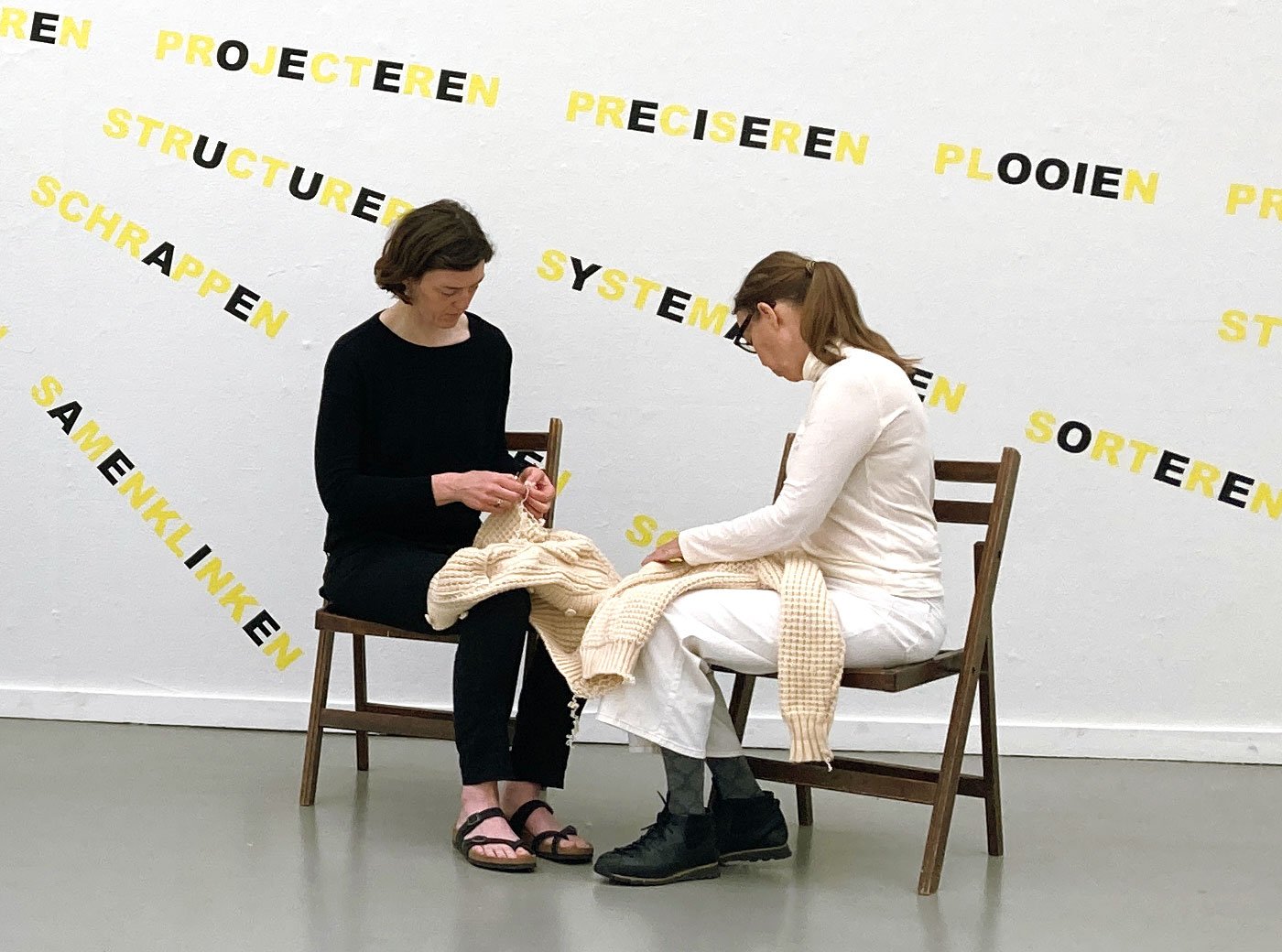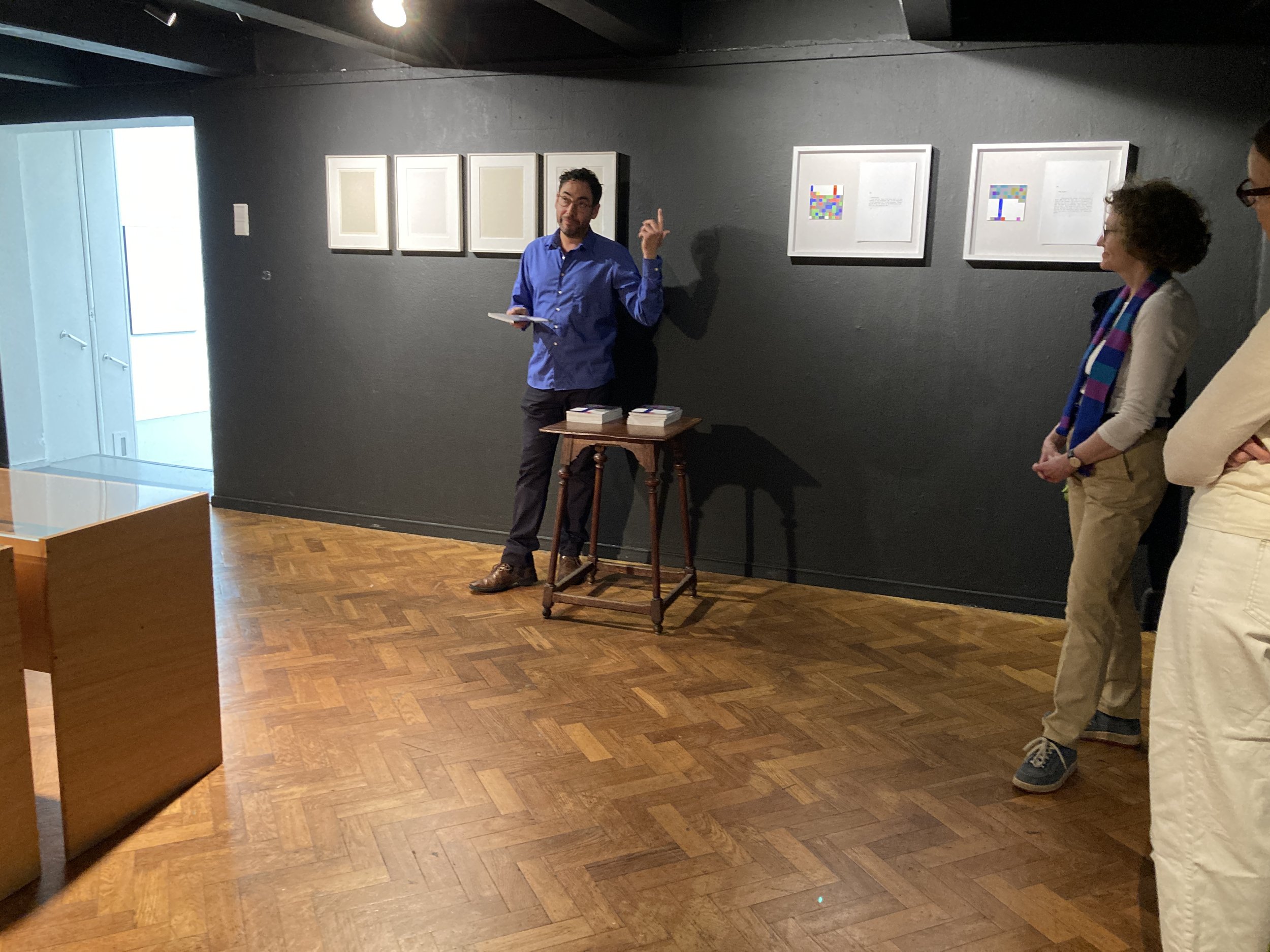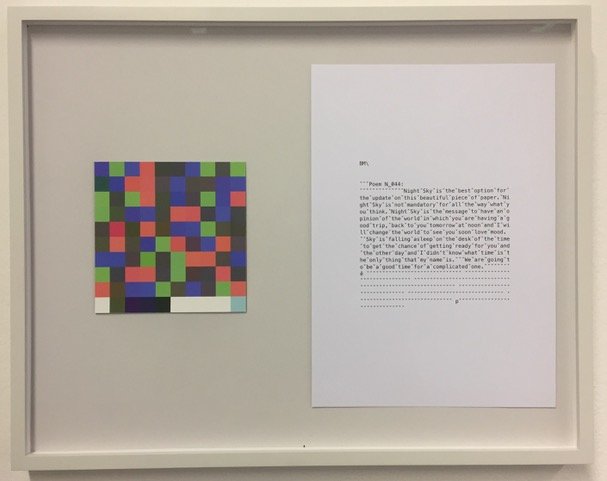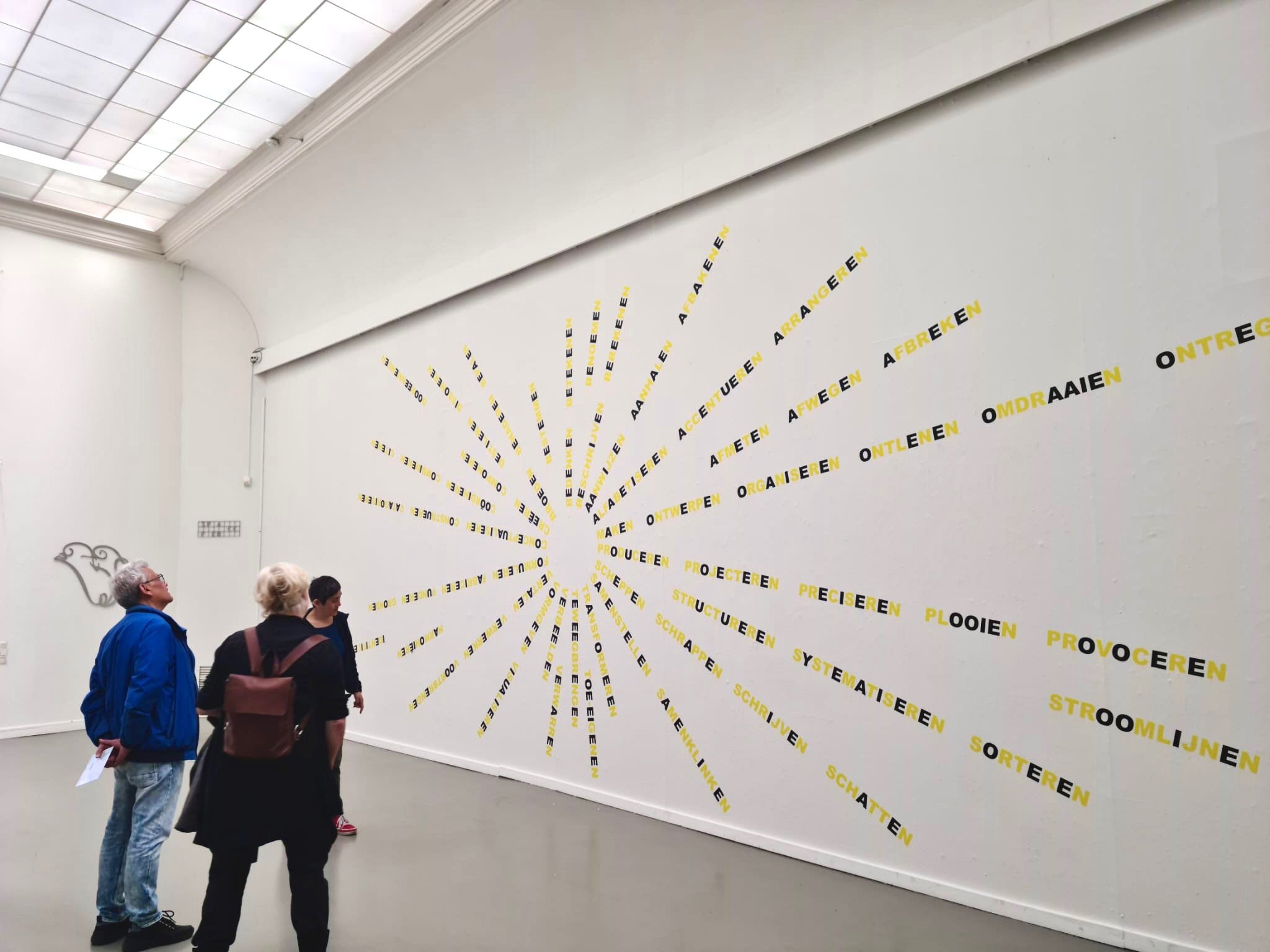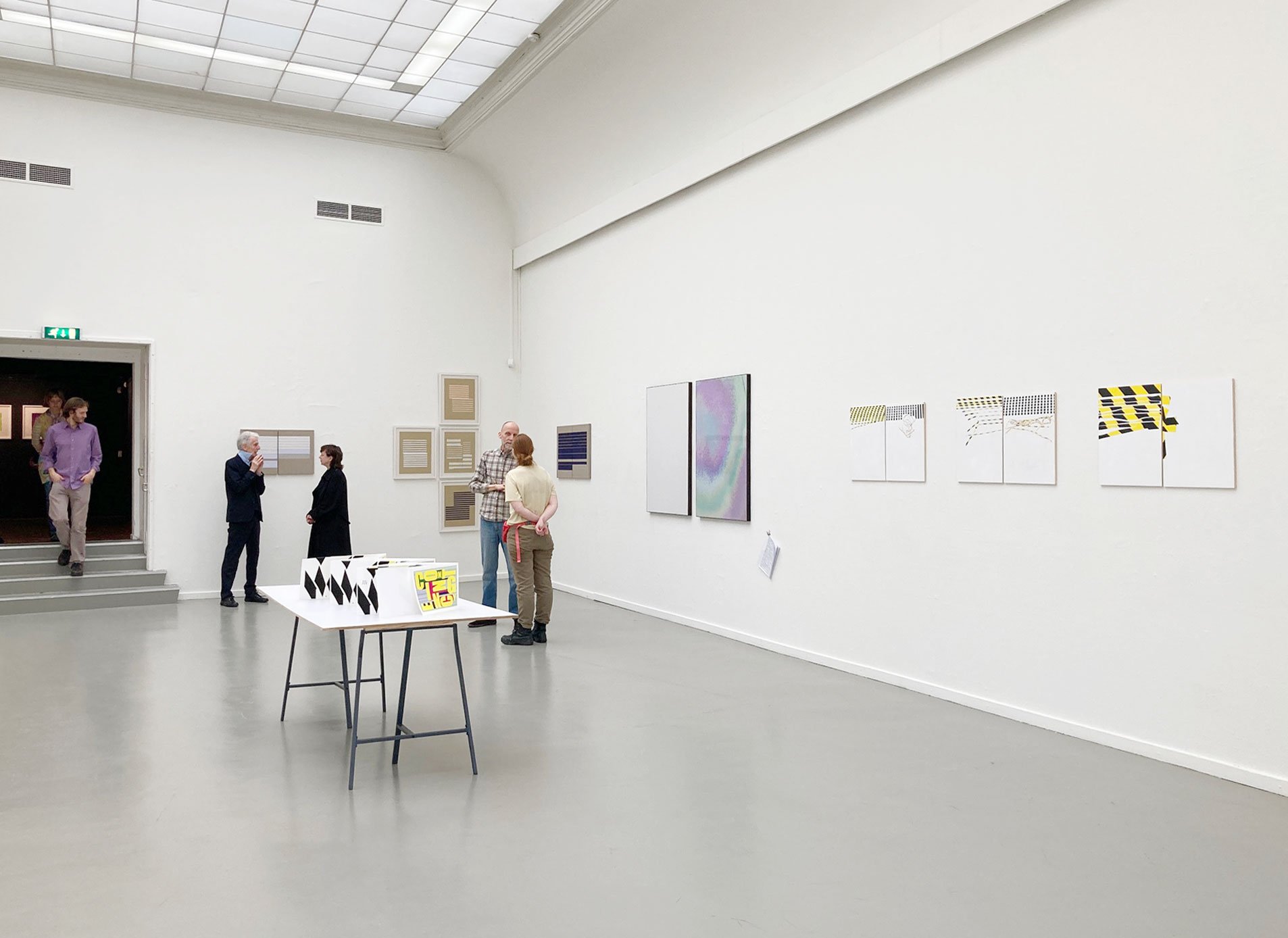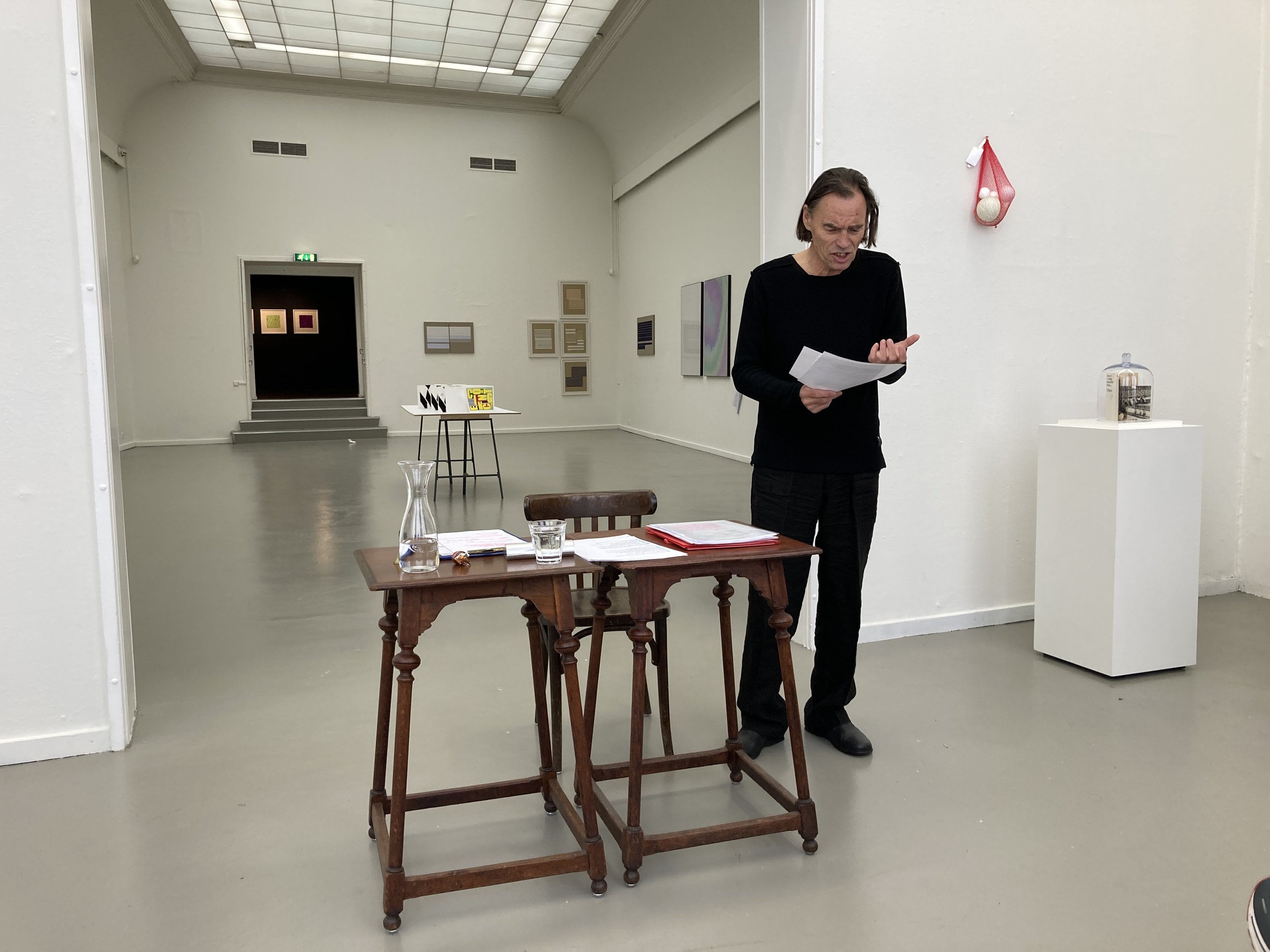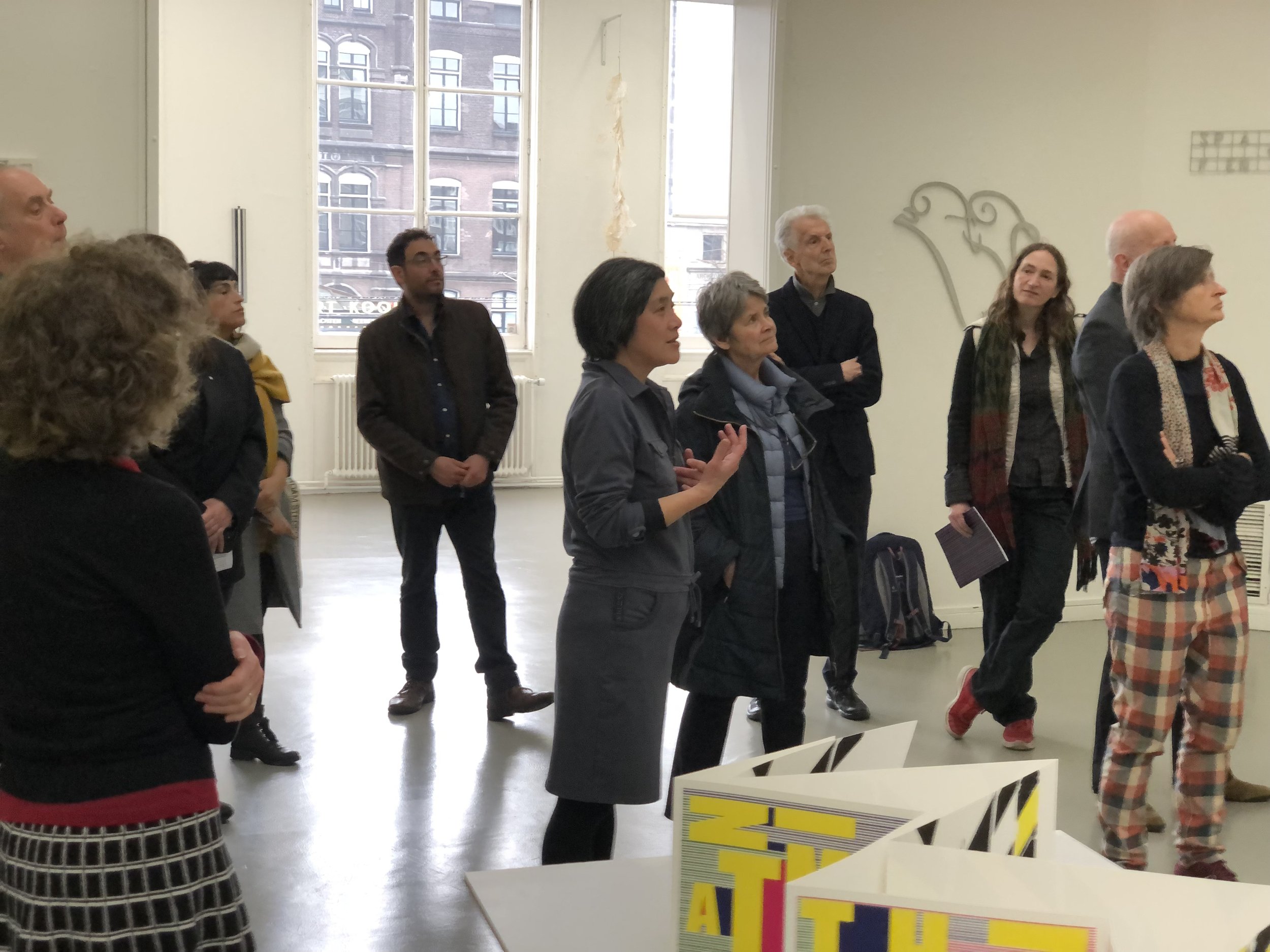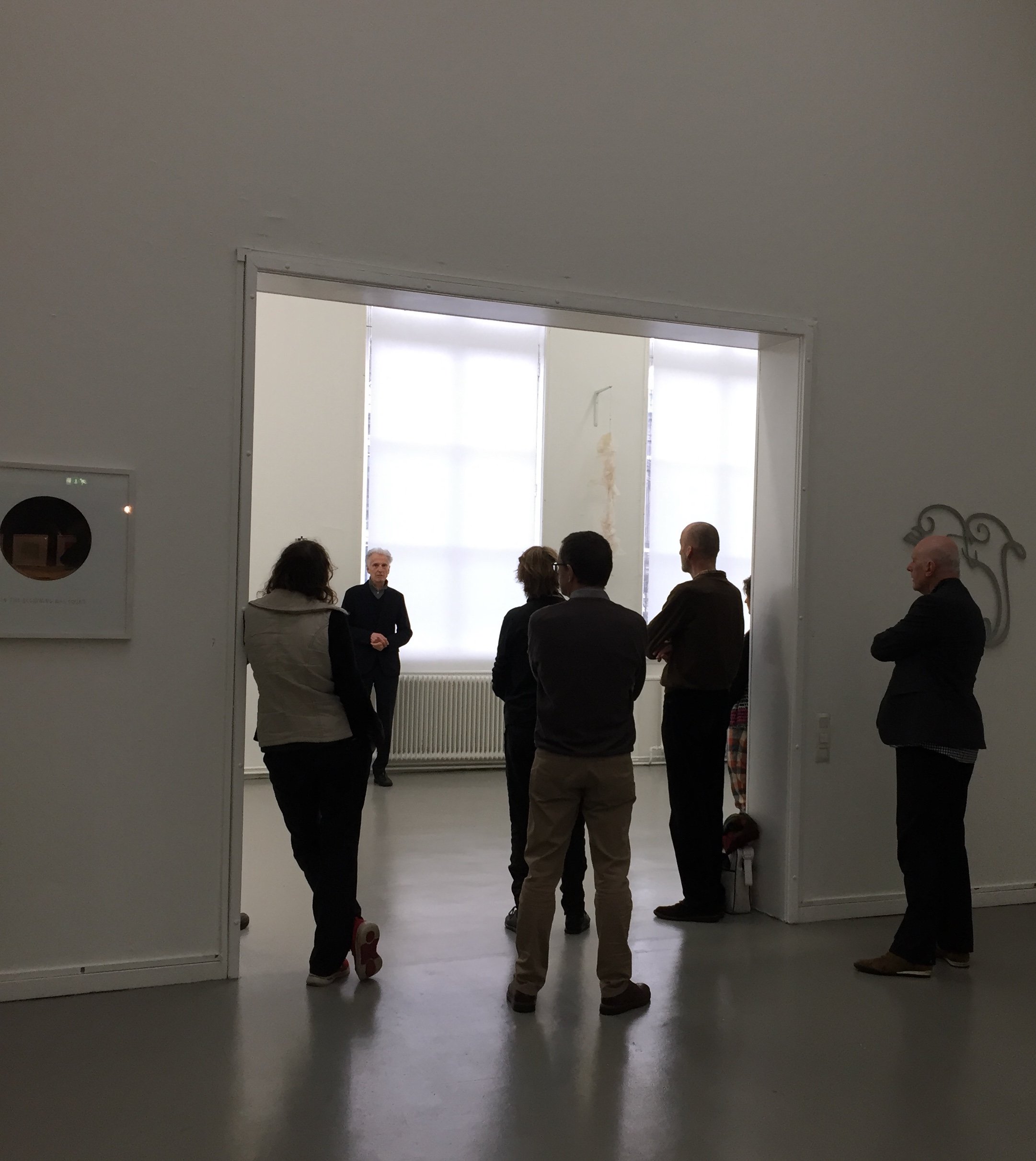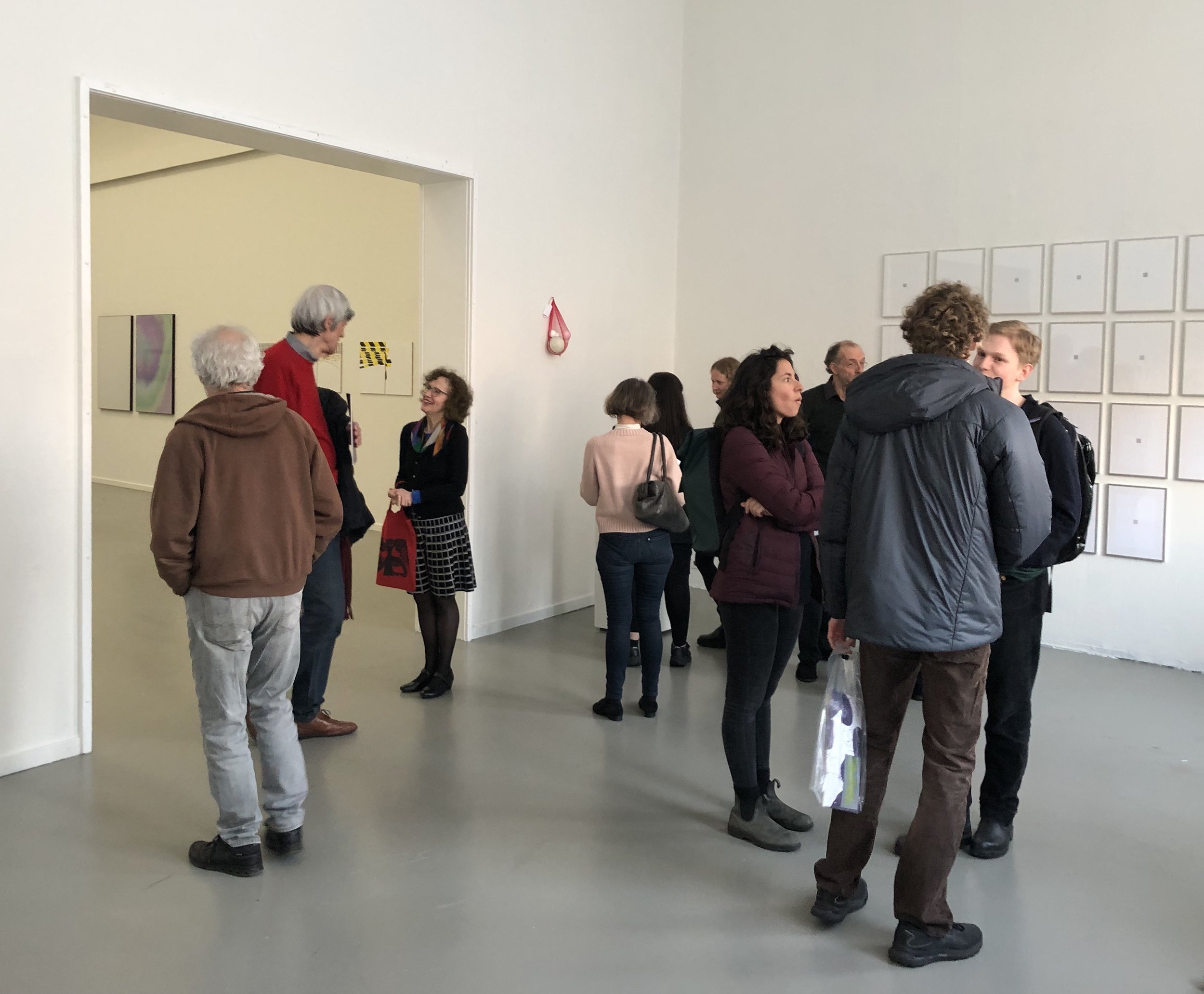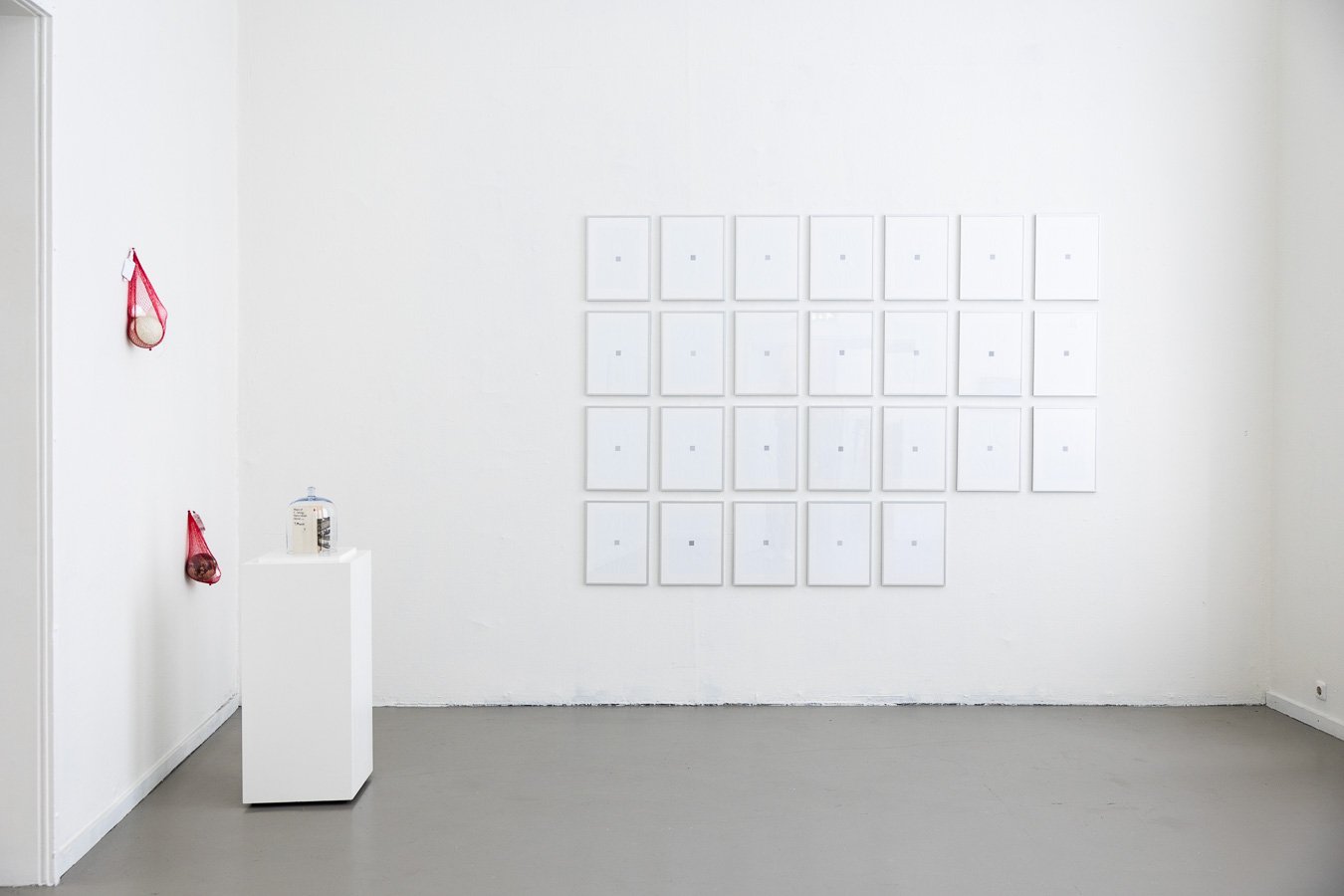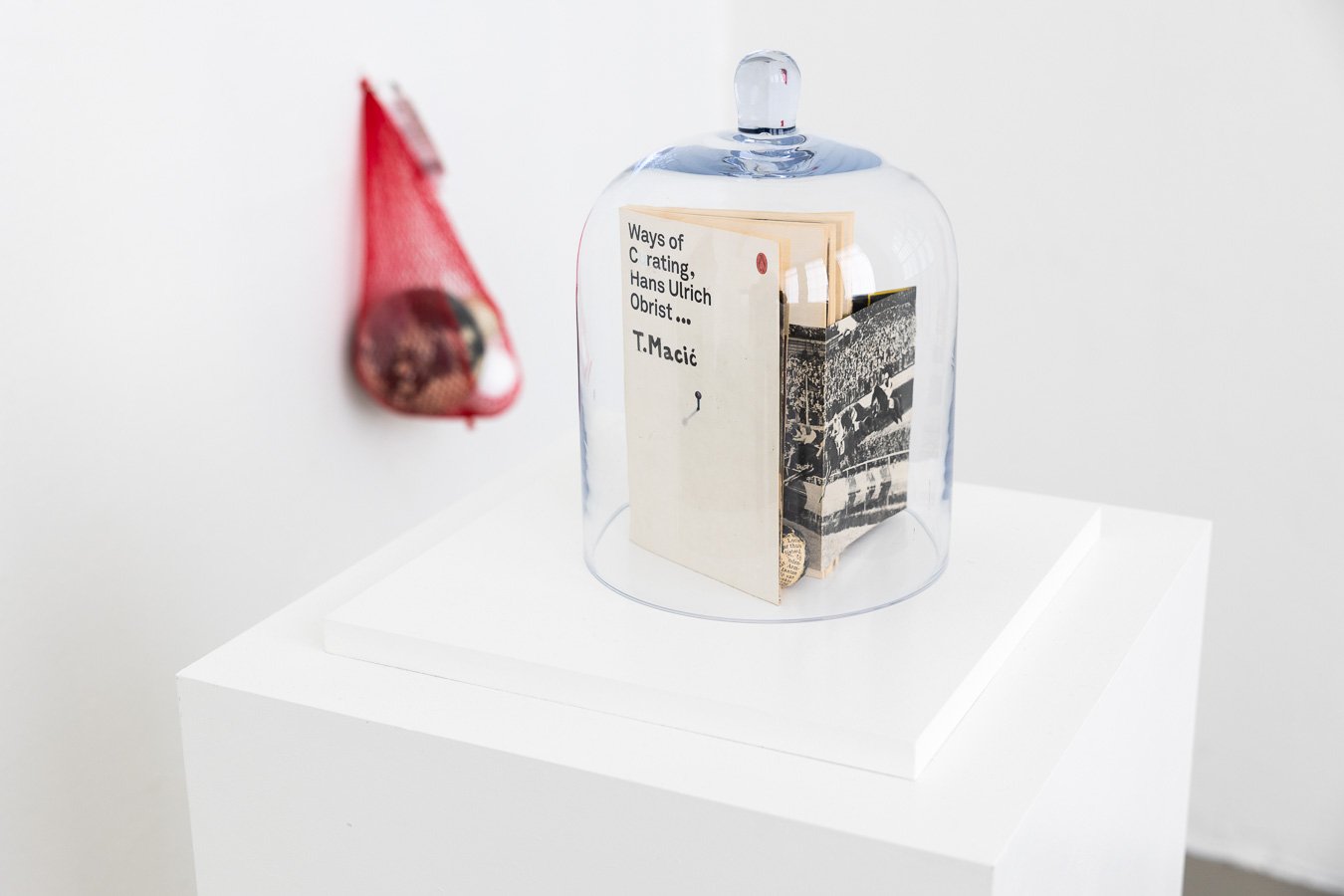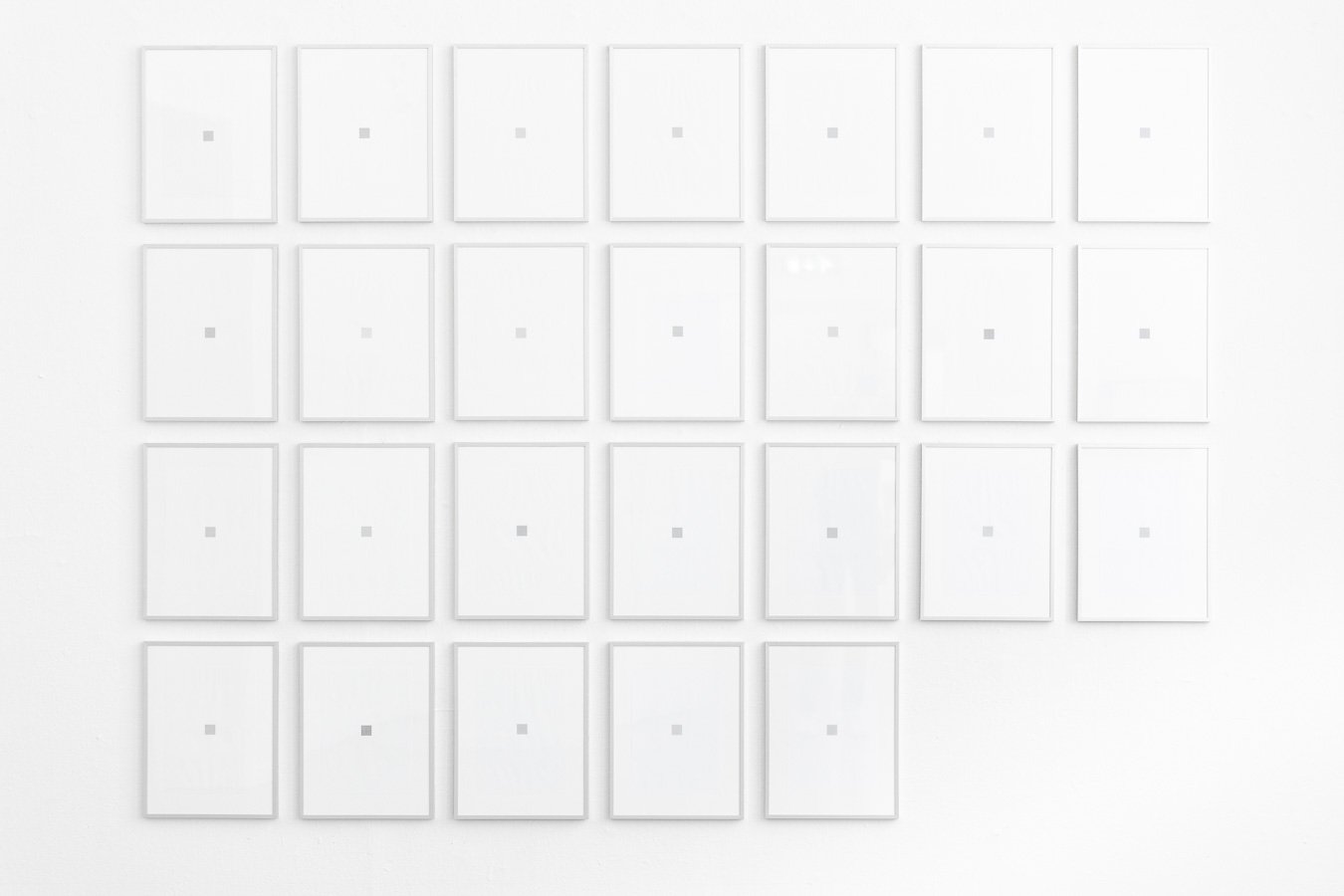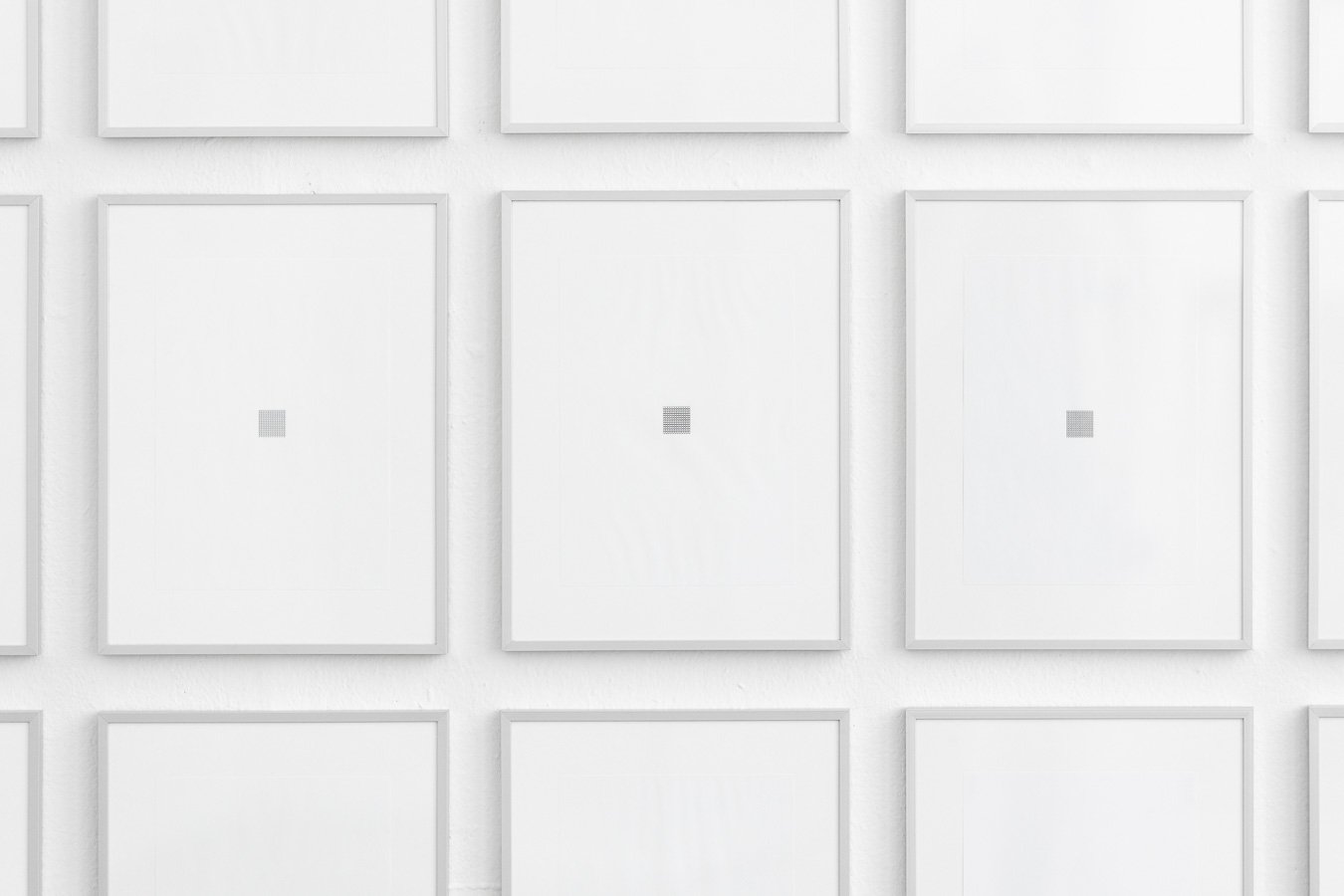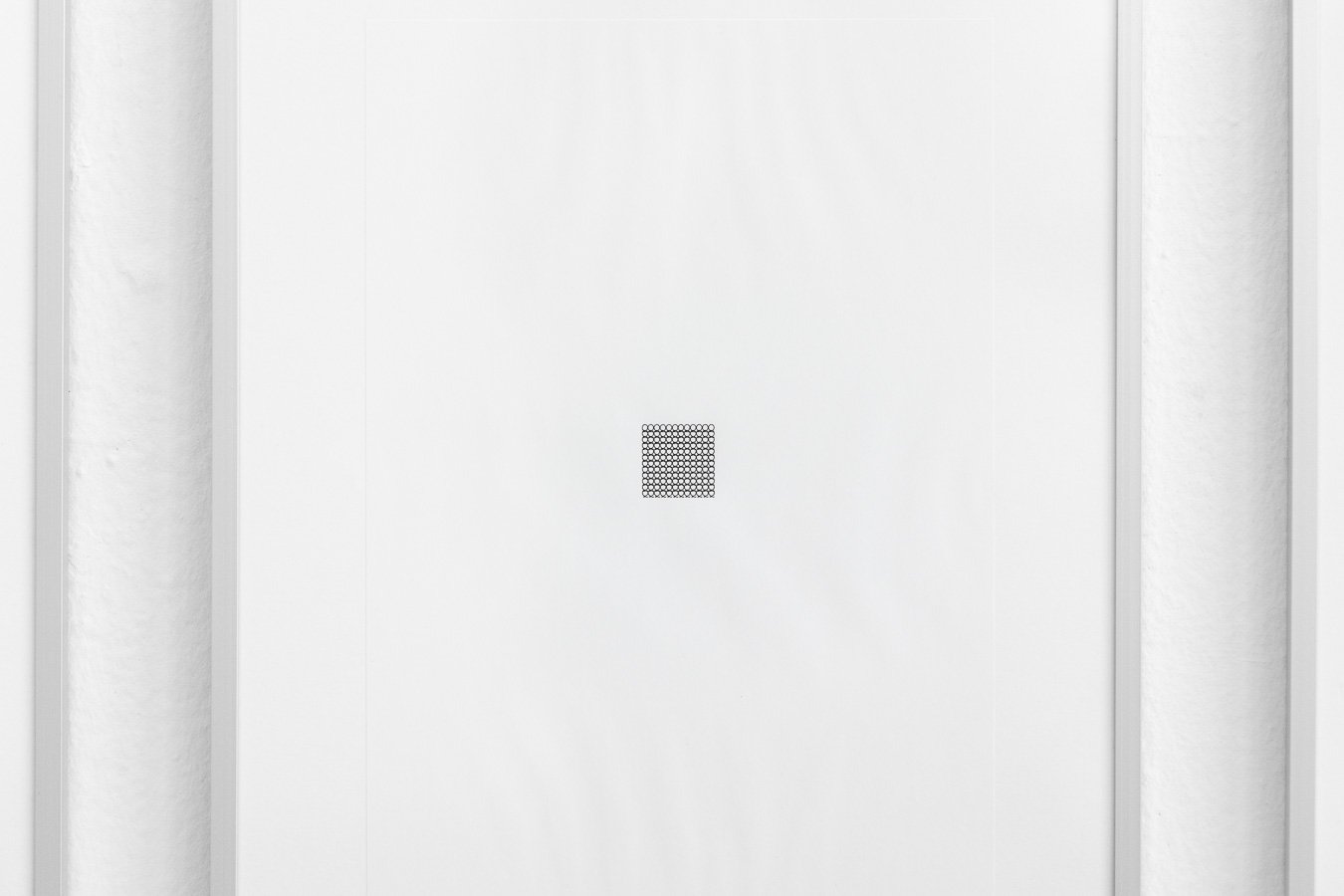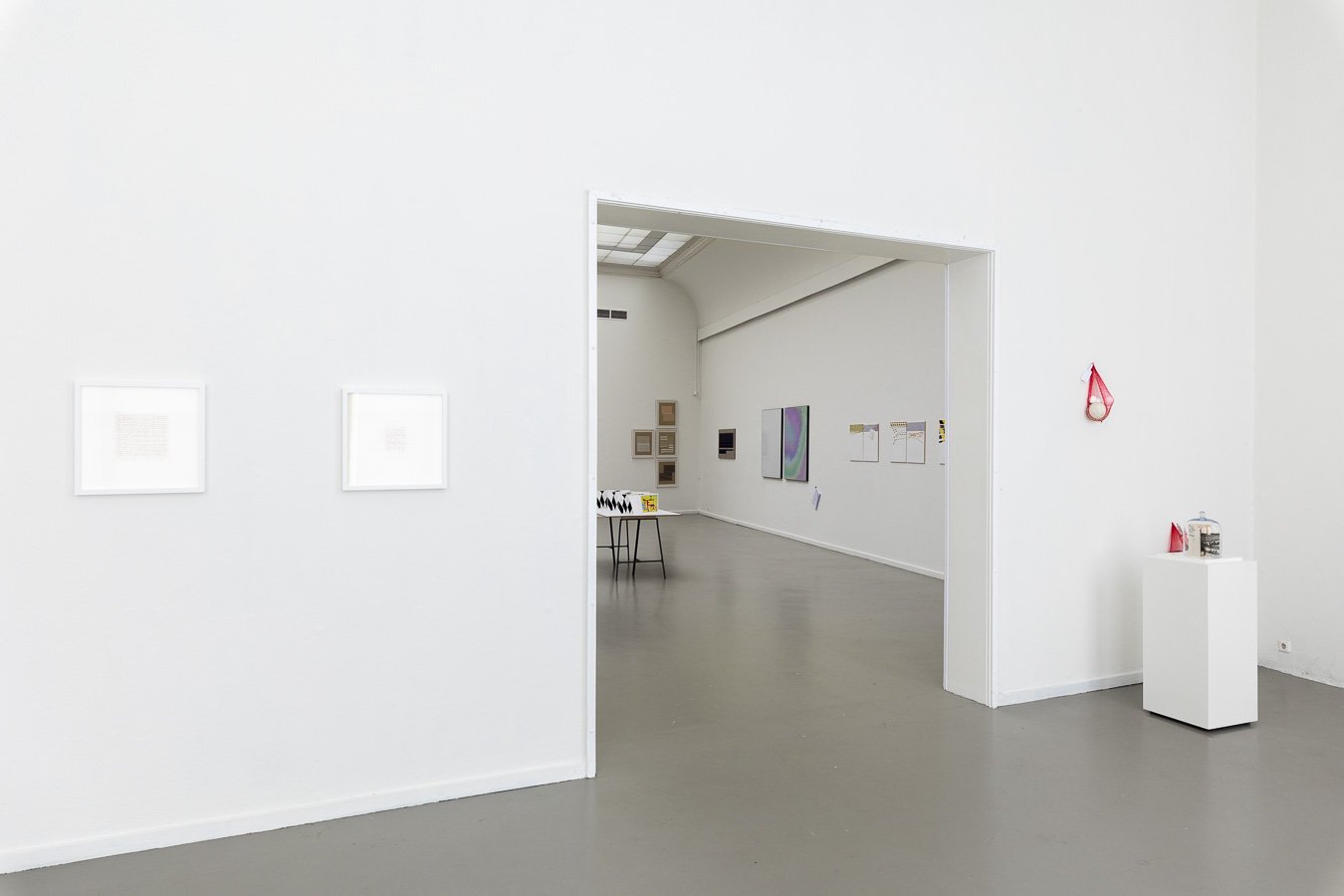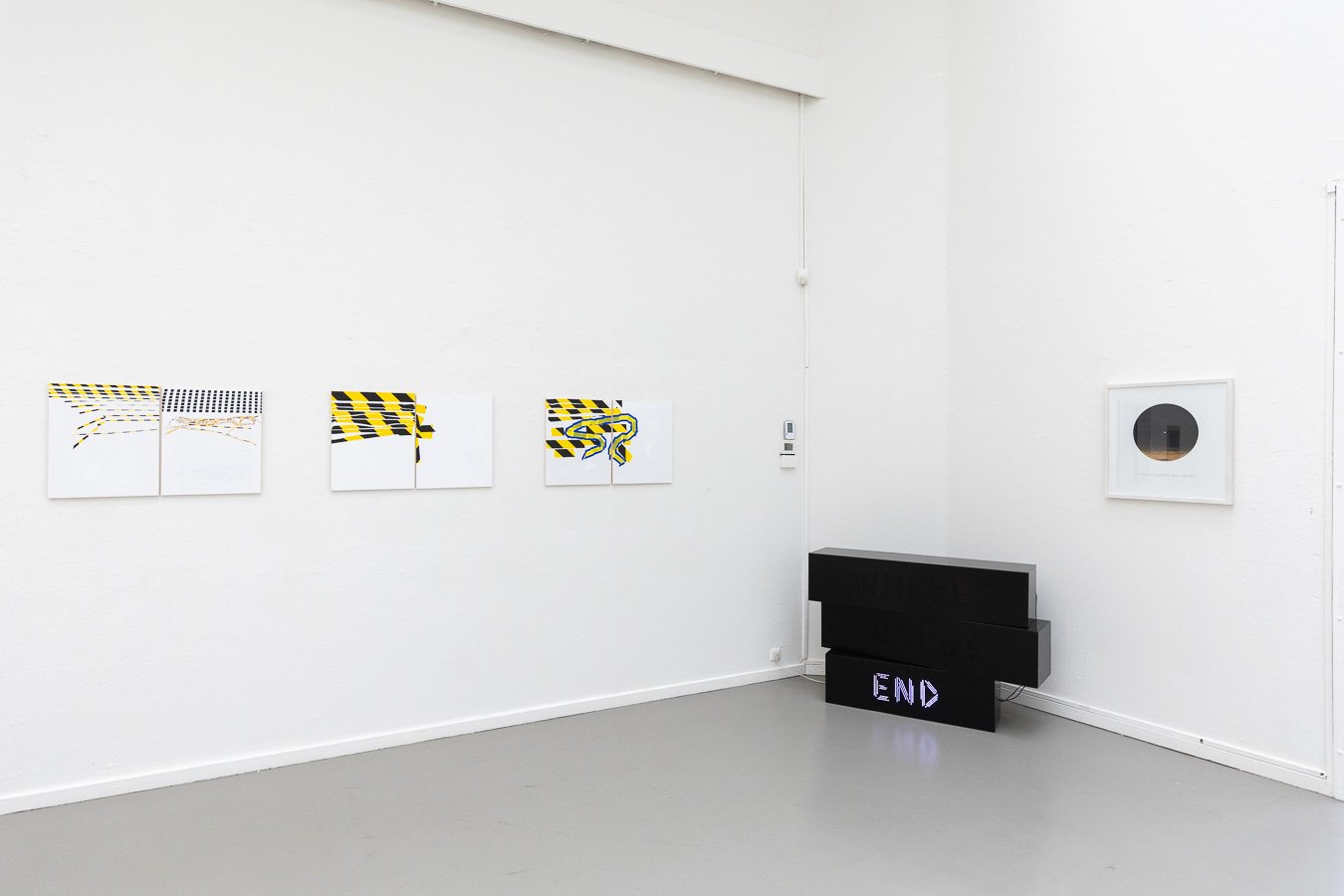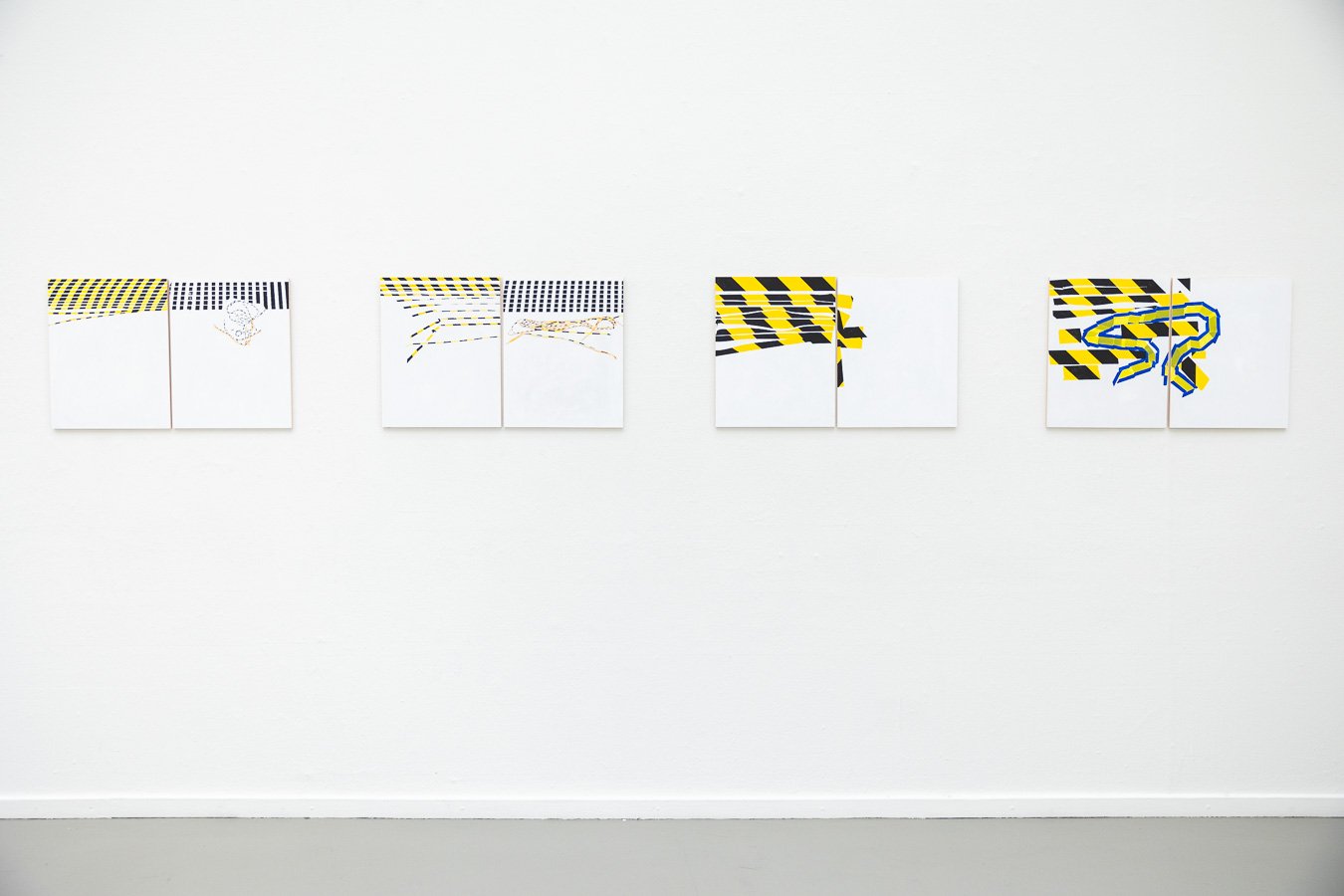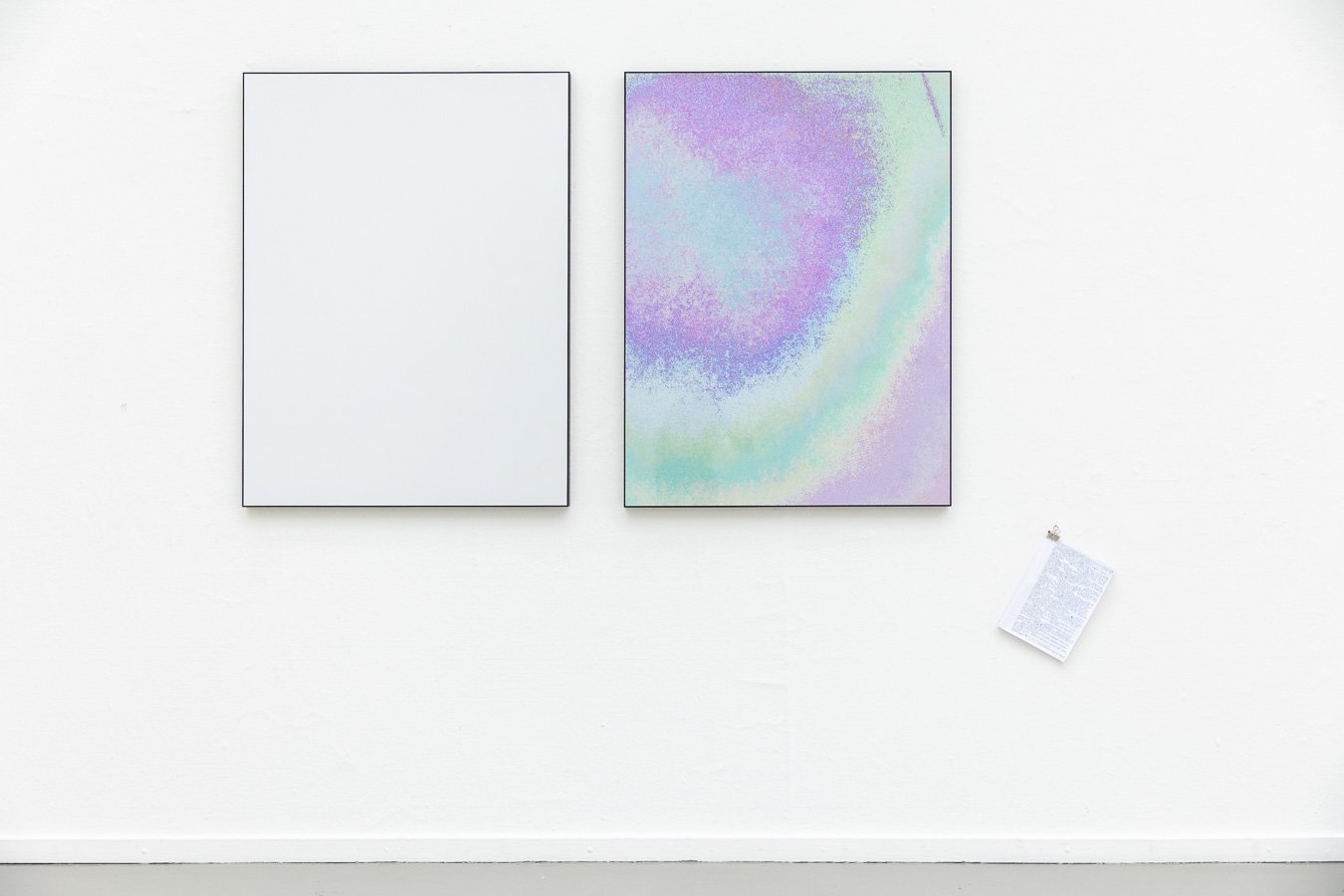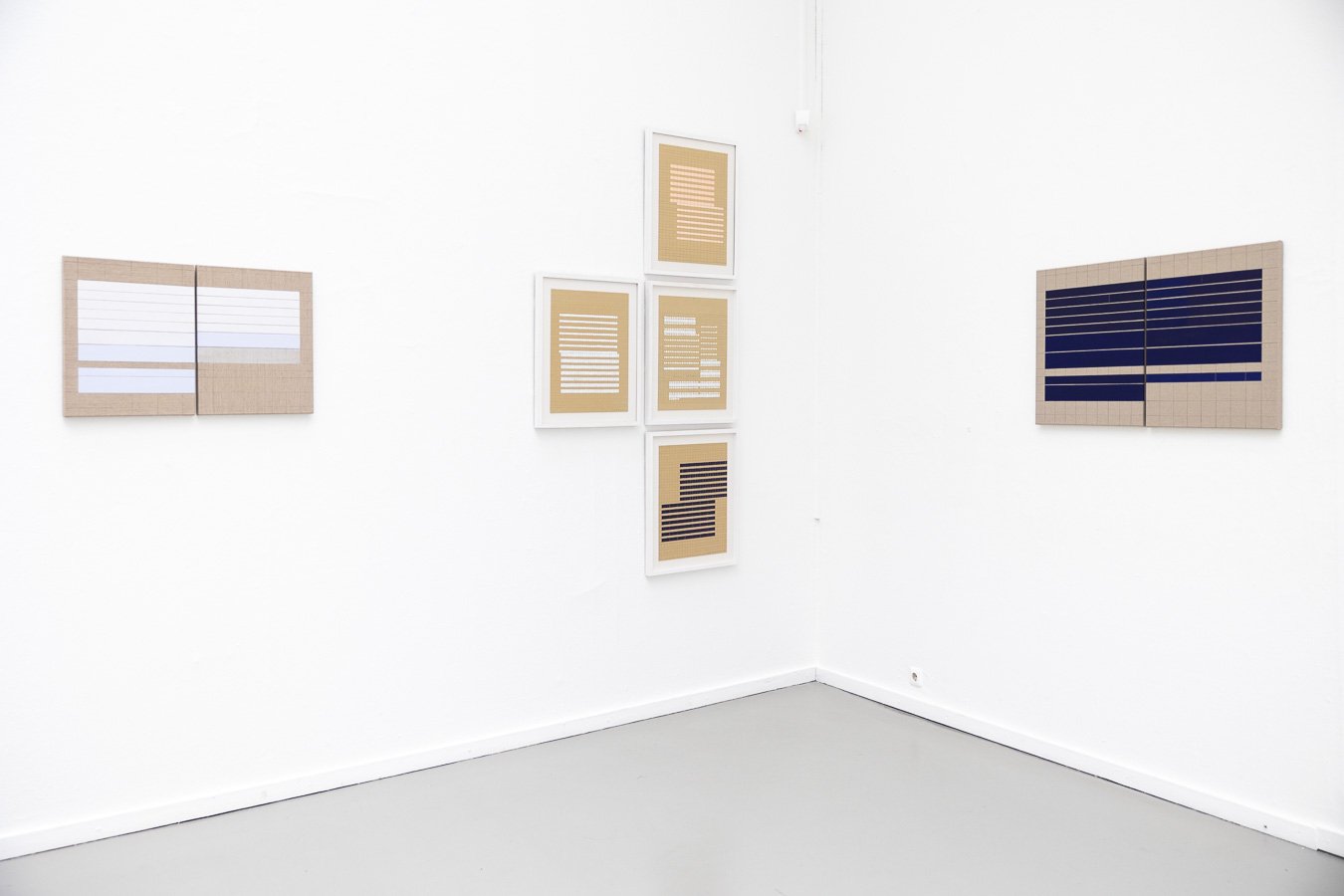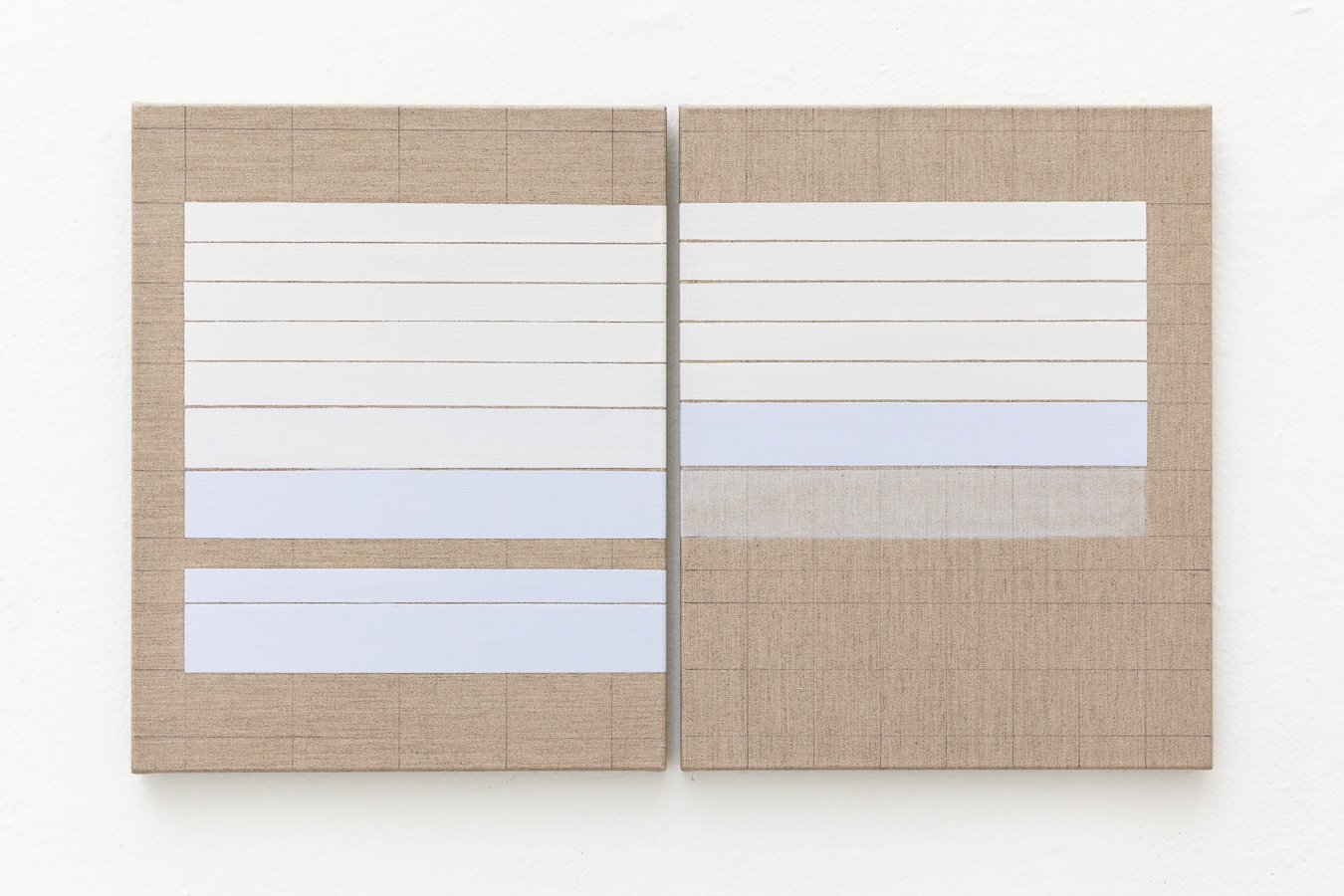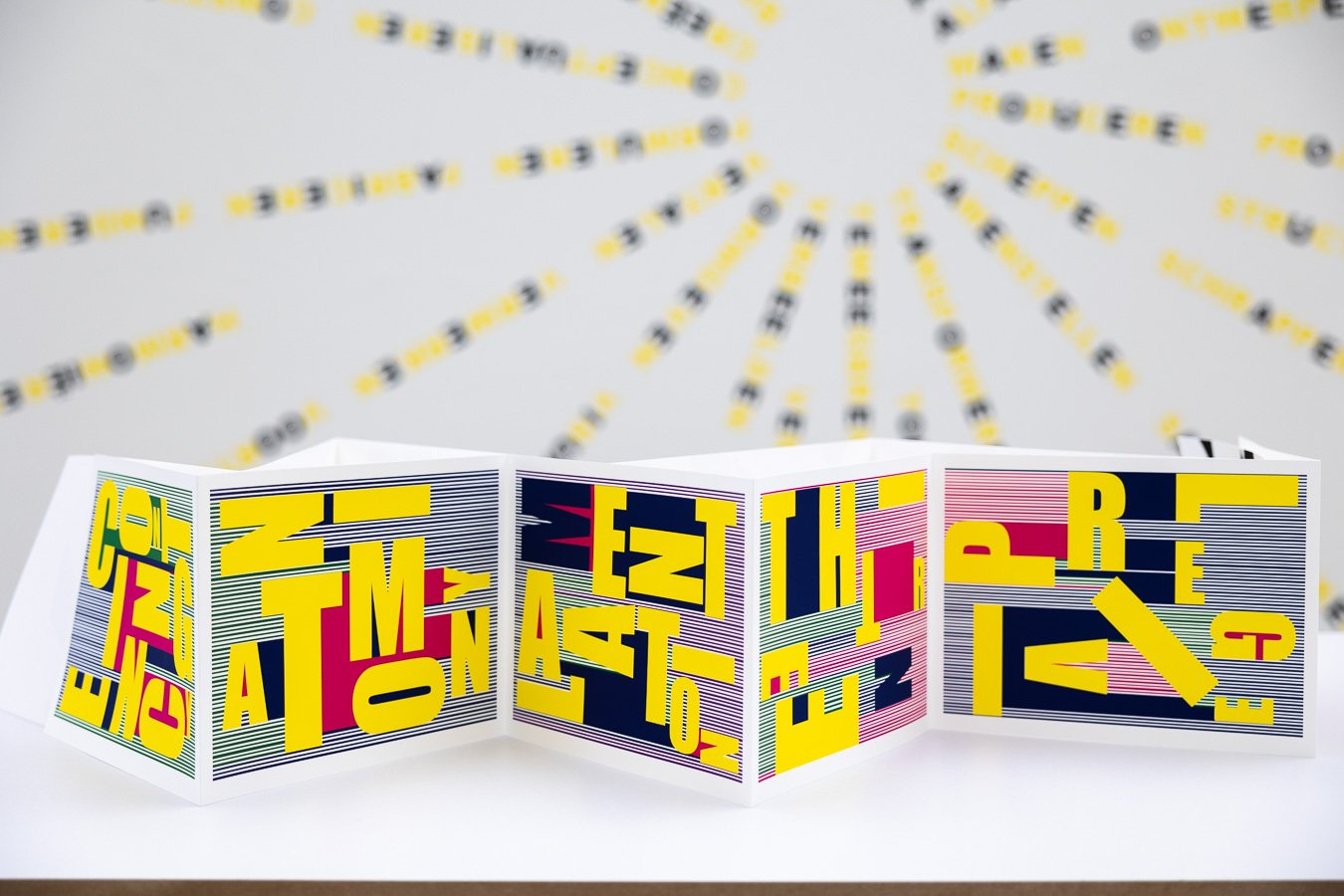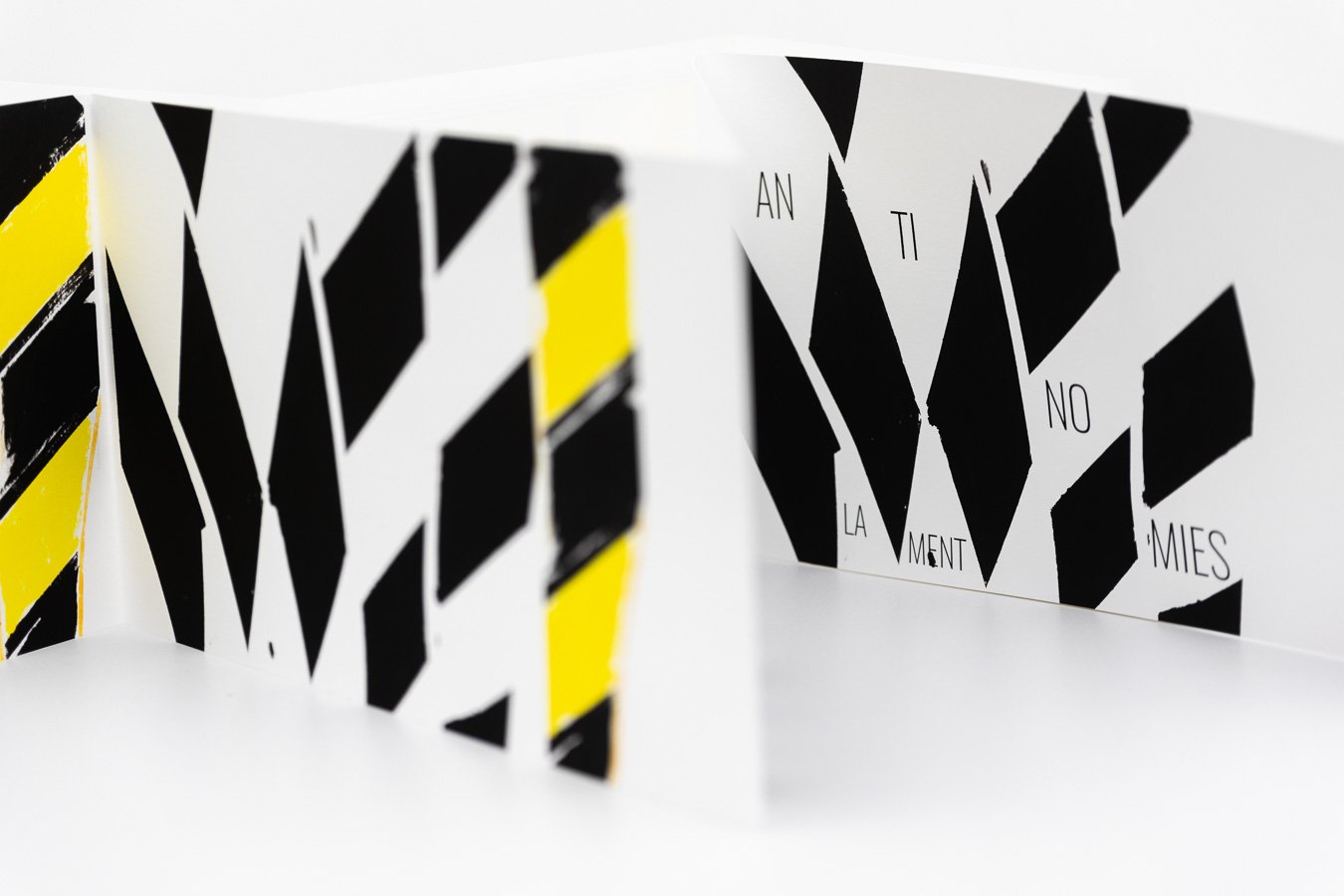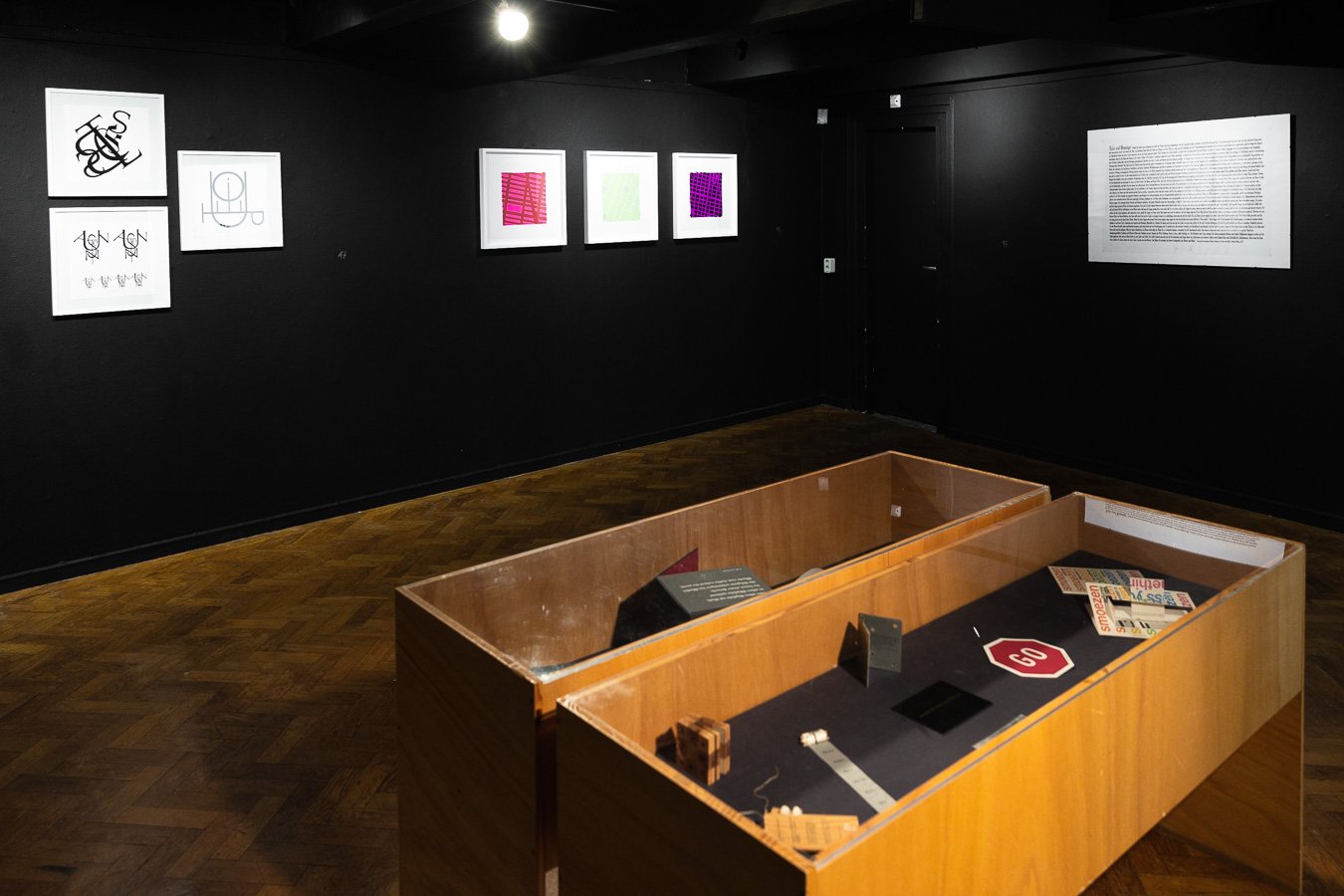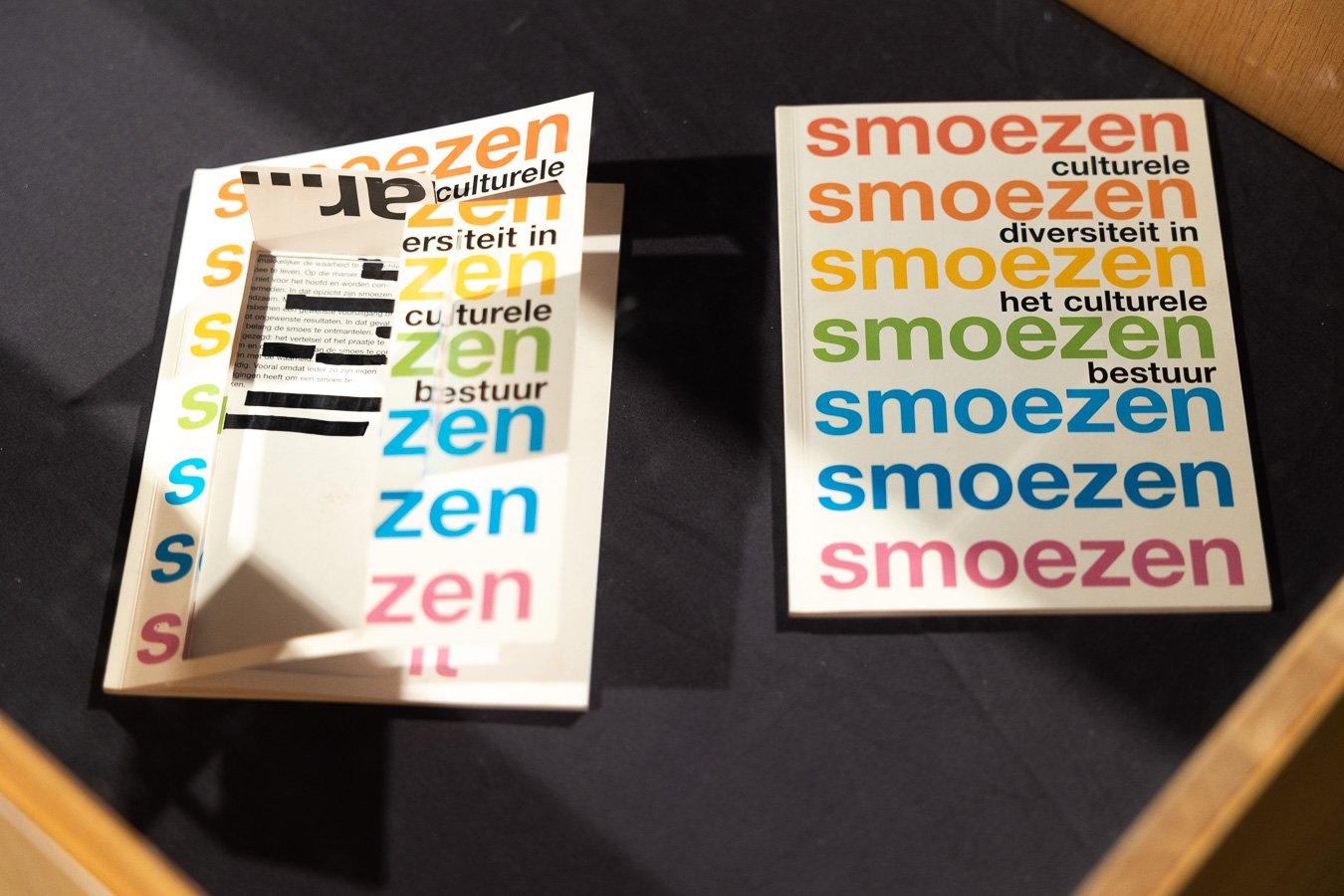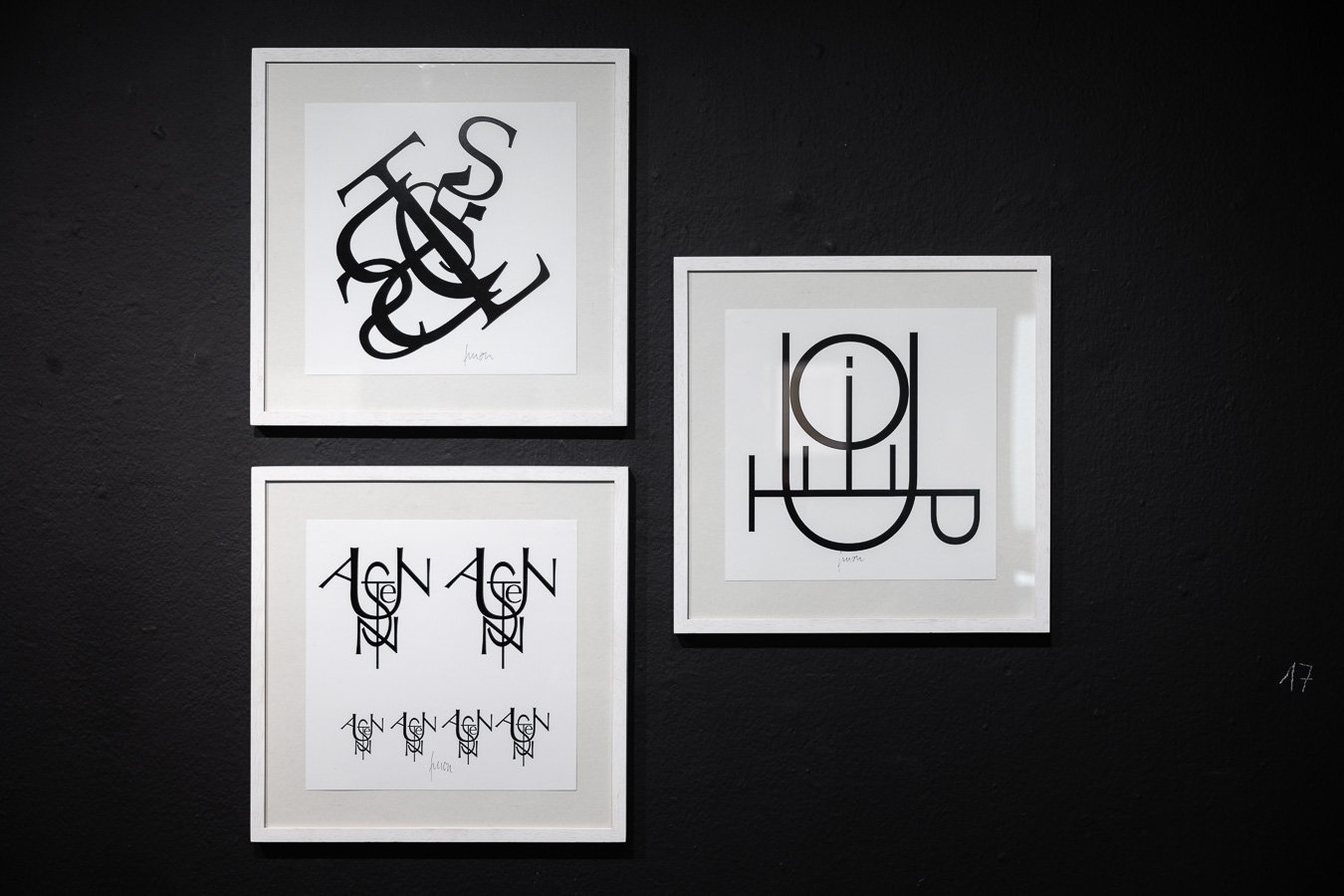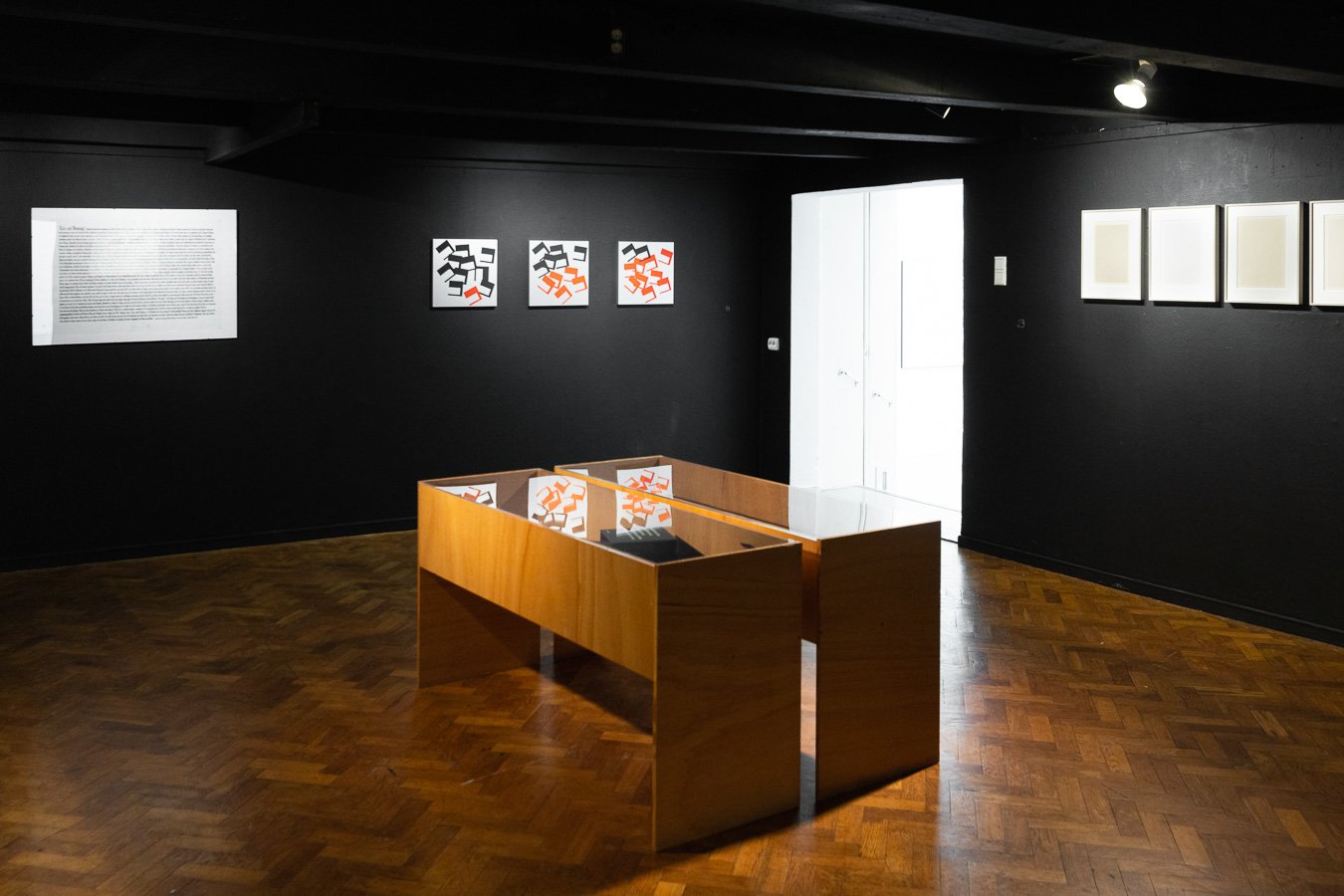BESCHERMEN/VRIJGEVEN / PROTECT >< RELEASE
The 'Espace Censuré Protégé' project on the facade of the home of Jan Verhaeghe (1965) is entirely in line with his work as a conceptual visual artist where he disguised as 'The Censored Censor' more often used unusual places in public spaces to present art. I was invited for the summer edition and a contribution for the project situated at Leopold II-laan 46 in Bruges.
Jan Verhaeghe marks the property as a protected censored area. His intervention consists of three acts: placing two copyright signs one on the façade, one on a window and blocking the windows. Covering all the windows with glass fleece is a way of shielding your private life from passers-by on the street.
The copyright sign was created to give protection against copyright infringement; to establish the right of the creators of artworks to own their property. It seems Verhaeghe wants to emphasise that what goes on in the house really does belong to him. Or not, because by affixing a copyright sign across the facade you read it as copyleft from the other direction, i.e. free of rights from or for the creator.
I am intrigued by this because of the actions happening simultaneously: protecting something (property or artwork) and the notion of 'releasing'. You can interpret the latter in different ways. In relation to copyright, 'releasing' means making an artwork available under certain conditions. You could interpret this as 'censorship': you cannot look inside to see what is going on behind the facade. Besides these acts, Verhaeghe invites other artists to further complete the intervention both with a flag and an image on his front door. In doing so, he provides a sanctuary for fellow artists to reflect on and experiment with the theme.
What else does the word ‘vrijgeven’ (= release) mean and what are its associations?
I searched for words starting with the prefix –‘ vrij-’ (free)-and found more than 45 related words, almost all of which have different meanings. From these, I selected 36 of them for the design on the flag and door. In addition to 'release' (e.g. of rights), the word 'generous' (e.g. if you donate a lot of money to charities) and vrijhaven (= sanctuary, a place where something is allowed that isn’t possible elsewhere, or a place where you cannot be persecuted, a hiding place). By the same line, you can also consider the words vrijhaven (= free port) or vrijmarkt (= free market). What about the words vrijzinnig (= liberal, meaning a tolerant attitude where freedom of opinion and meaning are central) and vrijgezel (= bachelor, single), or vrijwillig (= voluntary, not forced, unpaid labour)? With these widely differing associations, it’s no wonder that the concept of copyright protection and the copyright sign generate many misunderstandings. It’s clarifying to translate the words into English. You then see that for every Dutch word there is another English word that has the nuance and precise meaning.
In the design, the words are arranged according to their own meaning associations and sound. Below is the list of 36 words starting with VRIJ... and the English translation.
Dutch / English
1. vrijgeven / release of copyright etc.
2. vrijgevig / generous
3. vrijplaats / sanctuary
4. vrijhaven / freeport
5. vrijmarkt / freemarket
6. vrijstaand / freestanding
7. vrijhandel / free trade
8. vrijwaren / safeguard
9. vrijkaart / free pass
10. vrijstellen / exempt
11. vrijhouden / keep free
12. vrijkomen / release
13. vrijkopen / bail out
14. vrijheid / freedom
15. vrijheidslievend / freedom-loving
16. vrijheidsbeneming / deprivation of liberty
17. vrijheidsoorlog / freedom war
18. vrijstaat / free state
19. vrijheidsstraf / custody
20. vrijpleiten / exonarate, plea-bargain
21. vrijspreken / acquit
22. vrijgevochten / free-spirited, libertarian
23. vrijlaten / release, clear
24. vrijmoedig / bold
25. vrijpostig / impertinent
26. vrijblijvend / non-committal, optional
27. vrijwillig / voluntary
28. vrijzinnig / liberal, broad-minded
29. vrijdenker / freethinker
30. vrijbuiter / freebooter, buccaneer
31. vrijgezel / bachelor, single
32. vrijster / spinster
33. vrijen / lovemaking
34. vrijwel / practically
35. vrijdag / Friday
36. vrij / free, gratis
<< UPDATE August 4: the banner is now also on view at Xpositron Studio Building in Amsterdam, see left images <<
NL
Het project ‘Espace Censuré Protégé’ aan de gevel van de woning van Jan Verhaeghe (1965) zit helemaal in de lijn van zijn werk als conceptueel beeldend kunstenaar waar hij vermomd als ‘The Censored Censor’ vaker in de openbare ruimte gebruik maakte van bijzondere plekken om kunst te presenteren. Ik ben uitgenodigd om voor de zomereditie en een bijdrage te leveren voor het project dat gesitueerd is aan de Leopold II-laan 46 in Brugge.
Jan Verhaeghe markeert de woning als beschermd gecensureerde gebied. Zijn ingreep bestaat uit drie handelingen: het plaatsen van twee copyright tekens een aan de gevel, een op een raam en het blinderen van de ramen. Het afdekken van alle ramen met glasvlies is een manier om je privéleven af te schermen van voorbijgangers op straat.
Het copyrightteken is ontstaan om bescherming te geven tegen auteursinbreuk; om de makers van kunstwerken het recht te vast te stellen van hun eigendom. Het lijkt erop dat Verhaeghe wil benadrukken dat datgene wat zich in de woning afspeelt echt wel van hem is. Of niet, want door een copyrightteken dwars op de gevel aan te brengen lees je het vanuit de andere richting als copyleft, dus vrij van rechten van of voor de createur.
Ik ben hierdoor geïntrigeerd vanwege de handelingen tegelijkertijd gebeuren: het beschermen van iets (woning of kunstwerk) en het begrip ‘vrijgeven’. Dat laatste kun je op verschillende manieren interpreteren. In relatie tot auteursrechten betekent ‘vrijgeven’ een kunstwerk onder bepaalde voorwaarden beschikbaar stellen. Dit zou je als ‘censuur’ kunnen interpreteren: je kunt niet binnen kijken naar wat zich achter de gevel afspeelt. Naast deze handelingen, nodigt Verhaeghe andere kunstenaars uit om de ingreep verder te completeren zowel met een vlag als met een beeld op zijn voordeur. Hij biedt hiermee een vrijplaats aan collega-kunstenaars om te reflecteren over en te experimenteren op het thema.
Wat betekent het woord ‘vrijgeven’ nog meer en welke associatie heeft dit woord?
Ik zocht naar woorden die beginnen met het voorvoegsel vrij- en vond meer dan 45 aanverwante woorden die vrijwel allemaal andere betekenissen hebben. Daaruit heb ik er 36 van geselecteerd voor het ontwerp op de vlag en deur. Naast ‘vrijgeven’ (bijvoorbeeld van rechten) is ook het woord ‘vrijgevig’ (bijvoorbeeld als je veel geld doneert aan goede doelen) en ‘vrijplaats’ (= een plaats waar iets mag wat elders niet mag of kan, of waar je niet vervolgd mag worden, een schuilplek).
In het verlengde kun je ook de woorden ‘vrijhaven’ of ‘vrijmarkt’ zien. Hoe zit het met de woorden ‘vrijzinnig’ (= een tolerante houding waarbij vrijheid van mening en zingeving centraal staan) en ‘vrijgezel’ (= niet getrouwd), of ‘vrijwillig’ (= niet gedwongen, belangeloos en onbetaald)? Met deze uiteenlopende associaties is het geen wonder dat het begrip auteursrecht en het copyrightteken veel misverstanden oproepen. Verhelderend is het om de woorden te vertalen in het Engels. Dan zie je dat voor elk Nederlands woord een ander Engels woord bestaat die de nuance en de precieze betekenis heeft.
In het ontwerp zijn de woorden geordend volgens eigen betekenisassociaties en klank. Hiernaast de lijst met 36 woorden beginnend met vrij… en de Engelse vertaling.
Eerder heeft hij collega-kunstenaar Jonas Vansteenkiste (°1984, Kortrijk) gevraagd. Komende herfst- en wintereditie nemen Peter Puype (°1974, Torhout) en D.D.Trans (°1963, Tielt) voor hun rekening.
Earlier, Jan Verhaeghe asked fellow artist Jonas Vansteenkiste (°1984, Kortrijk). Upcoming autumn and winter editions will feature Peter Puype (°1974, Torhout) and D.D.Trans (°1963, Tielt).







